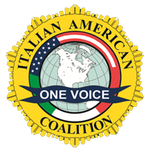|
By Corrado Gigante, Retired Director, US Equal Employment Opportunity Commission and Board Member IAOVC At the outset of this article I want to make it clear that the Italian American One Voice Coalition is an apolitical group. We simply don’t get involved in partisan issues nor do we care to take sides. The one side we do care about and speak out on is the treatment of Italian Americans. In this article we will look at some recent developments in the media coverage and campaign efforts towards Italian American elected officials and candidates. At the heart of our democracy is the right to free speech. Indeed, in the First Amendment to the U.S. Constitution, free speech is front and center as a right to not be infringed upon by government. Over time there have been instances when free speech has had limits placed on it. In a case of clear and present danger, the question is always will the speech create a dangerous situation, will it provoke violence or incite illegal action? There is also the setting that involves “fighting words” which may incite immediate violence. As a society, we generally agree that such extreme speech needs some restraints. But what happens in the political arena? What has changed over time? Political attacks with racial and ethnic overtones are nothing new in our American history. In the 19th century, Thomas Nast became famous rendering caricatures depicting the Irish and Italians in hostile demeaning images. Posters and manifestos attacking politicians because of their ethnicity and religion were plastered on walls. Ethnic and religion block voting was encouraged and still has its impact even in today’s elections. As a society we began to move away from ethnic and religious attacks. John Kennedy’s election as President in 1960 put to shame those who had attacked him because of his ethnicity and religion. The civil rights movement of the 1960s also caused us to examine those practices. Over the subsequent years, open attacks based on national origin and religious beliefs became less prevalent in our national discourse. Yet, though the open attacks diminished, the quiet “whispers campaigns” took over. What was not nice to say openly became the fodder for the implied, the innuendo and the suggested. For Italian American politicians the “whispers campaigns” revolved around innuendos of “connections” to mobsters, even when there were none. The mere fact that one is Italian American is sufficient enough to conjure this connection. This is what has faced the Italian American politician in these last few decades. Mario Cuomo, the former Governor of New York faced this when he was considering a run for president. In an article published in the Chicago Tribune in January 1986, Jon Margolis wrote about politicians and commentators who openly wondered if he was “too Italian” when he objected to the words “mafia” and “organized crime” being used interchangeably. In New Jersey, one of our IAOVC board members, Paul DiGaetano, faced the “whispers campaign” when he ran for governor in the Republican general primary in 2005. Most recently, in November 2013, U.S. Senator Mary Landrieu had her face superimposed on the image of Benito Mussolini as part of an attack ad. Some of you may not know that Mary Landrieu’s grandmother was Italian-born. We have seen similar attacks in Florida campaigns as well. Now we have the introduction of questionable images presented by the news media. You may recall last November’s TIME magazine’s cover image of Governor Chris Christie which cast him in a very unfavorable and some would suggest threatening look. Commentators referred to the image as making the Governor look like a mobster. In January of this year, the New York Daily News published a cartoon by Bramhall which invoked the imagery of a horse’s head in a cartoon about the Governor. In its recent edition, The New Republic magazine features an illustration of the Governor standing in the driveway of an expensive looking mansion wearing boxer shorts, an open bathrobe and a large gold chain as he retrieves a newspaper, an obvious reference to the Tony Soprano fictional character. If this type of defamation and ridicule was perpetrated in the workplace it would amount to national origin harassment. But in the realm of politics it is defined as free speech and expression protected by the First Amendment. The news media, both right and left, would tell us that they are enlightened messengers to the public. The irony is that in perpetuating these defamatory images today’s news media is no better than when Thomas Nast created his images over 100 years ago. What has changed over time? Not much. We, the Italian American community need to set aside our partisanship when we see this type of negative imagery and need to speak out loudly. As you can see, the victims of the attacks in the form of images are from both sides of the political spectrum. The proliferation of these negative and defamatory images has no bounds. The IAOVC asks you to join us in our constant fight against these practices. We have no political affiliation. Our affiliation is the Italian American community.
0 Comments
Leave a Reply. |
Archives
January 2015
Categories |
The Italian American ONE VOICE Coalition, Inc. is an IRS registered 501(c)3 non-profit corporation - EIN 22-3361110.
© Italian American ONE VOICE Coalition. All rights reserved.

 RSS Feed
RSS Feed